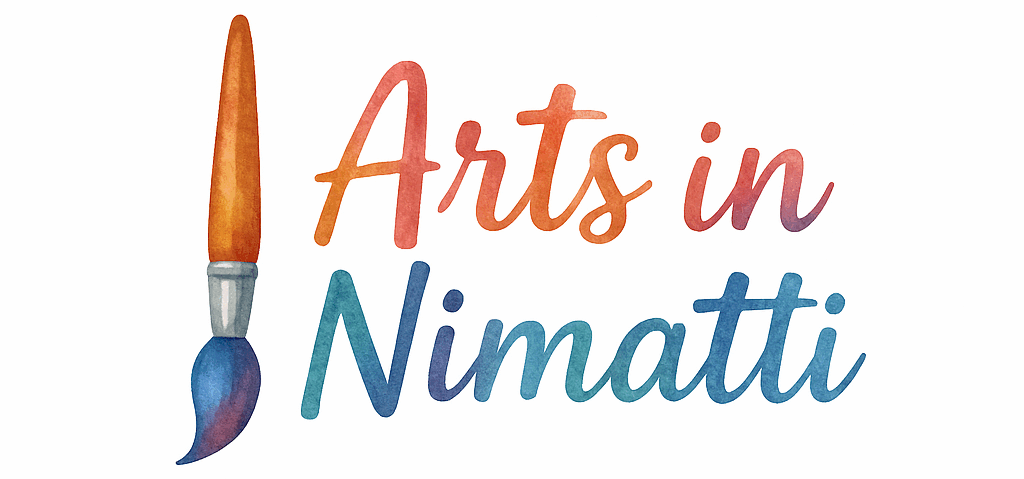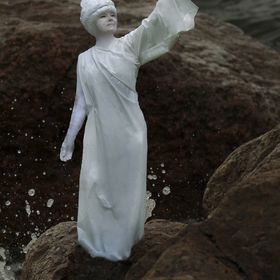Introduction
Why Art History is Crucial for Artists
As an artist, it’s essential to understand the rich history that has shaped the art world today. Art history isn’t just about appreciating beautiful paintings or sculptures; it’s about recognizing the movements, techniques, and ideologies that influence the way we create and interpret art. Knowing art history allows you to expand your creative boundaries, learn from past masters, and even challenge traditional ideas.
Whether you’re a student of art education or a seasoned professional, diving into these key art movements will not only deepen your knowledge but also help you grow as an artist. In this article, we’ll take a look at 10 influential art history movements that every artist should know. These movements laid the foundation for much of modern art and continue to influence contemporary practices.
1. The Renaissance
Key Characteristics of Renaissance Art
The Renaissance, which began in Italy in the 14th century, is considered one of the most important periods in art history. It marked a rebirth of classical ideas, focusing on realism, proportion, perspective, and human anatomy. Artists during this time aimed to represent the world as accurately as possible while incorporating the philosophies of ancient Greece and Rome.
Influential Artists: Leonardo, Michelangelo
Two of the most prominent figures of the Renaissance were Leonardo da Vinci and Michelangelo Buonarroti. Leonardo’s mastery of light, shadow, and anatomy can be seen in works like The Last Supper and Vitruvian Man. Michelangelo’s sculptures, such as David and his work on the Sistine Chapel ceiling, set new standards for the human figure in art.
Techniques That Changed the Art World
The Renaissance brought revolutionary techniques like linear perspective and chiaroscuro (the use of light and shadow). These techniques allowed artists to create depth and realism in their work. Artists today still use these methods to add dimension and realism to their creations. Studying the art techniques of the Renaissance can help artists create more lifelike compositions.
2. Baroque Art
Defining the Baroque Style
Baroque art, which developed in the 17th century, is known for its grandeur, emotional intensity, and use of dramatic lighting. It often focused on themes of religious and royal power, with a strong emphasis on movement, contrast, and bold colors. Baroque artists sought to engage the viewer through the use of powerful imagery and dynamic compositions.
Key Artists and Their Masterpieces
Caravaggio is perhaps the most famous Baroque artist, known for his intense realism and dramatic use of light and shadow. His works like The Calling of Saint Matthew exemplify the emotional power of Baroque painting. Peter Paul Rubens, another major figure, was known for his vibrant color palettes and dynamic compositions, as seen in The Descent from the Cross.
How Baroque Art Shaped Modern Artistic Expression
Baroque’s influence is still seen today, particularly in theater and film, where lighting and dramatic compositions are used to evoke strong emotions. Many contemporary artists also draw inspiration from the Baroque’s dynamic movement and its ability to convey emotion through art.
3. Rococo
The Playful Elegance of Rococo
Rococo, which emerged in France in the early 18th century, is characterized by its playful, light-hearted nature. Unlike the intense emotion of Baroque, Rococo embraced whimsy, elegance, and romantic themes. It was a celebration of beauty, nature, and the sensual pleasures of life, often featuring pastel colors, ornate details, and curved forms.
Notable Artists: Boucher, Fragonard
François Boucher and Jean-Honoré Fragonard are two of the most renowned artists of the Rococo period. Boucher’s The Triumph of Venus and Fragonard’s The Swing capture the romantic and playful spirit of Rococo with their use of soft, fluid lines and light color palettes.
Rococo’s Influence on Modern Art
Though Rococo eventually fell out of favor, its focus on beauty and decoration can be seen in modern design and decorative arts. Contemporary artists still find inspiration in the soft curves and delicate ornamentation that define the Rococo style.

4. Neoclassicism
Rebirth of Classical Ideals
Neoclassicism, which began in the mid-18th century, was a reaction against the excesses of Rococo. It sought to revive the ideals of classical antiquity, emphasizing simplicity, order, and moral virtue. Neoclassical artists focused on the human form, idealized subjects from ancient mythology and history, and embraced clean lines and balanced compositions.
Major Figures: David, Ingres
Jacques-Louis David, a leader of the Neoclassical movement, created works like The Death of Socrates and Napoleon Crossing the Alps, which exemplify the period’s focus on heroism and moral virtue. Jean-Auguste-Dominique Ingres continued this tradition with works like The Grande Odalisque, showcasing idealized human forms and a restrained use of color.
Neoclassical Techniques and Style
Neoclassicism’s influence is still felt in art and architecture today, particularly in the design of government buildings and monuments. Its emphasis on proportion and harmony can be seen in the way contemporary artists approach both figurative and abstract forms.
5. Romanticism
Exploring Emotion and Individualism
Romanticism emerged in the late 18th century as a reaction to the industrial revolution and the rationalism of the Enlightenment. It focused on emotion, individualism, and the sublime. Romantic artists often sought to capture the beauty of nature, the mystery of the unknown, and the depth of human emotion.
Famous Romantic Artists: Goya, Turner, Delacroix
Francisco Goya, whose work The Third of May 1808 is a powerful depiction of war’s horrors, used dramatic contrasts and dark themes to explore human suffering. J.M.W. Turner, known for his atmospheric landscapes, and Eugène Delacroix, whose painting Liberty Leading the People became a symbol of freedom, helped define the Romantic movement.
The Lasting Influence of Romanticism
Romanticism continues to influence artists today, particularly in the realm of landscape painting and emotional expression. Its themes of personal freedom and the power of nature resonate strongly with contemporary art.
6. Realism
Depicting Everyday Life in Art
Realism, which emerged in the mid-19th century, focused on depicting everyday life and ordinary people, often in a direct and unidealized manner. Realist artists rejected the idealized forms of previous movements, instead choosing to portray the struggles of the working class, rural life, and contemporary social issues.
Key Realist Artists: Courbet, Millet
Gustave Courbet is perhaps the most well-known realist painter, with works like The Stone Breakers challenging traditional representations of labor and poverty. Jean-François Millet, best known for his painting The Gleaners, focused on rural life and the dignity of the working class.
Realism’s Impact on Contemporary Art
The influence of Realism can still be seen in modern art, particularly in movements like conceptual art and photorealism, where artists explore themes of everyday life and social issues through direct and unflinching portrayals.
7. Impressionism
Understanding Light, Color, and Movement
Impressionism, which emerged in France in the late 19th century, focused on capturing fleeting moments and the effects of light and color. Impressionist artists painted outdoors, aiming to depict the world as it appeared in real time, rather than through the lens of academic tradition.
Influential Impressionist Artists: Monet, Renoir
Claude Monet is best known for his series paintings, such as Water Lilies, which explored the changing effects of light on the natural world. Pierre-Auguste Renoir, with works like Luncheon of the Boating Party, captured intimate social scenes filled with warmth and light.
Impressionism’s Influence on Future Movements
Impressionism radically changed the way artists viewed and depicted the world, and its influence can be seen in abstract art and modern painting. Today, Impressionism’s legacy continues to inspire artists to experiment with color and light.
8. Post-Impressionism
Pushing Boundaries Beyond Impressionism
Post-Impressionism was a response to the limitations of Impressionism. Artists in this movement sought to explore new ways of expressing emotion, structure, and form. While they retained some of the techniques of the Impressionists, Post-Impressionists were more focused on symbolic content, formal structure, and subjective interpretation.
Key Figures: Van Gogh, Seurat, Cézanne
Vincent van Gogh, with his swirling brushstrokes and vivid color palette, conveyed intense emotion in works like Starry Night. Georges Seurat developed the technique of pointillism, as seen in A Sunday Afternoon on the Island of La Grande Jatte. Paul Cézanne emphasized the geometric shapes in nature and influenced modern abstraction with works like The Bathers.
Post-Impressionism’s Legacy
Post-Impressionism laid the groundwork for the development of modern art movements like expressionism and abstract art, as artists continued to explore ways of representing personal vision and emotion.
9. Cubism
Fragmenting Reality: A New Way of Seeing
Cubism, pioneered by Pablo Picasso and Georges Braque, broke with traditional perspectives by presenting objects from multiple viewpoints at the same time. This fragmented approach to reality allowed for a more abstract and dynamic interpretation of the world.
Major Artists: Picasso, Braque
Picasso’s Les Demoiselles d’Avignon is a hallmark of Cubism, as it deconstructs the human form into geometric shapes. Georges Braque helped develop the technique of collage and experimented with texture and depth in his Cubist works.
The Development of Abstract Art
Cubism revolutionized art, leading to the abstract expressionism and minimalism movements. Its influence can be seen in everything from modern sculpture to graphic design.
10. Surrealism
Exploring the Unconscious Mind
Surrealism, which emerged in the 1920s, aimed to explore the unconscious mind, dreams, and irrationality. Surrealist artists combined elements of reality with the fantastical, creating dreamlike, often bizarre images that defied logic.
Key Surrealist Artists: Dalí, Magritte
Salvador Dalí, with his melting clocks in The Persistence of Memory, and René Magritte, known for his enigmatic works like The Son of Man, challenged our perceptions of reality.
The Influence of Surrealism in Modern Art
Surrealism’s exploration of the subconscious mind has influenced everything from contemporary abstract painting to digital art. The movement continues to inspire artists to explore the boundaries between reality and the dream world.
Conclusion
Why You Should Know These Movements
Each of these 10 art history movements has had a profound impact on the way we understand and appreciate art today. By familiarizing yourself with these movements, you’ll gain a deeper understanding of the evolution of artistic expression and how the ideas from the past continue to shape modern art.
FAQs
- What is the most important art movement in history?
- The Renaissance is often considered the most influential, as it laid the groundwork for much of Western art.
- How did the Impressionists change the art world?
- The Impressionists revolutionized art by focusing on capturing light and everyday scenes, which was a departure from the traditional academic approach.
- What is the difference between Cubism and Surrealism?
- Cubism focuses on abstracting objects into geometric shapes, while Surrealism explores dreamlike, illogical imagery.
- Why did Romanticism focus on emotion?
- Romanticism emphasized the individual’s emotional response to the world, often focusing on nature, the sublime, and human experience.
- What techniques are unique to Baroque art?
- Baroque art is known for its use of dramatic lighting (chiaroscuro) and intense emotional expression.
- How did Realism influence contemporary art?
- Realism paved the way for later movements that depict real life and social issues, such as conceptual art.
- Is there a connection between art history and modern design?
- Yes, many modern design principles, especially in e-commerce and graphic design, draw inspiration from art movements like Cubism and Surrealism.


